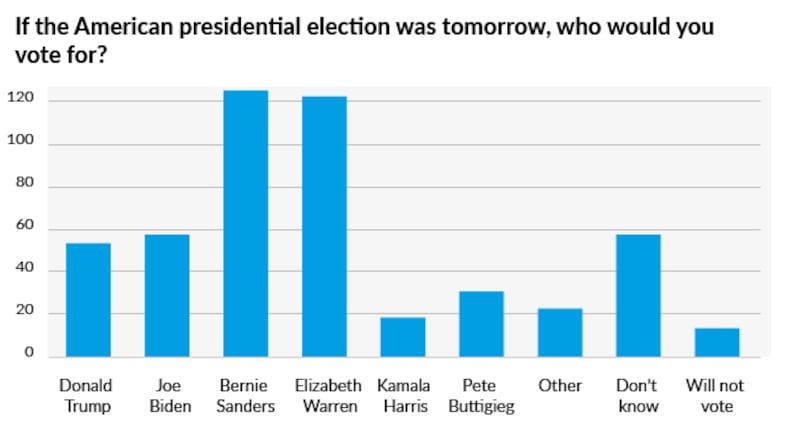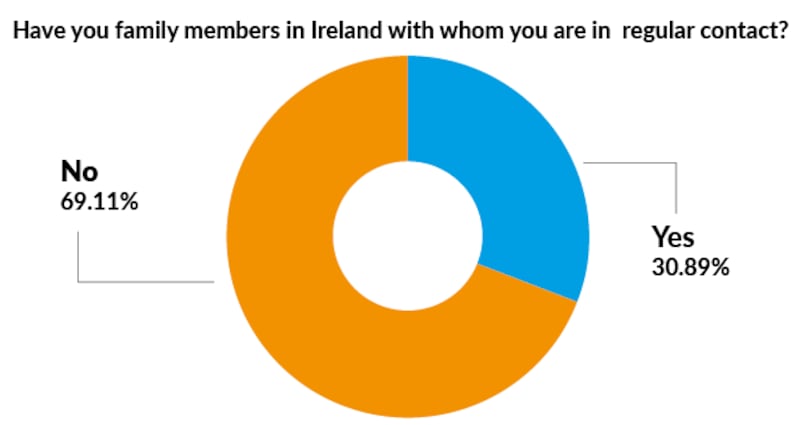Stephen McEnery has the look. Red-haired, blue-eyed, and pale-skinned, the 25 -year-old architect is often asked if he is Irish. “It’s the name too,” says the Kansas-native in his distinctive midwestern accent. Like millions of Americans, McEnery claims Irish-heritage.
But as America reflects on its Irish links this month, there is a growing sense that Irish-American identity is changing and needs to adapt in the 21st century.
A new study by Professor Liam Kennedy of the Clinton Institute in University College Dublin, in conjunction with New York's Glucksman Institute, explores the nature of Irish-American identity among a younger generation of Americans.
It’s the first study of its kind to examine how this new generation – those aged between 18 and 30 – conceptualise their Irish heritage.
While the last US census, in 2010, showed that 34.7m Americans claimed Irish ancestry, that figure had been 40.2m in 1980
The research was undertaken against the background of a changing landscape of Irish America. Shifting demographics and immigration patterns have eroded Irish-American identity in recent decades.
While the last US census, in 2010, showed that 34.7 million Americans claimed Irish ancestry, that figure had dropped from 40.2 million in 1980.
This pattern of decline is also borne out in the numbers of Irish Americans who were born in Ireland.
While the 1980 census registered 250,000 Irish-born residents in the US, this had dropped to 153,840 in 2010.
Underpinning all these trends is the reality of reduced immigration from Ireland to the United States. With more and more Irish young people emigrating to countries such as Australia, New Zealand and Canada in recent years, fewer are moving to America.
In 2015, just 1,607 Irish-born people obtained legal permanent residency in the US. This reflects in part the stricter immigration rules in the US in recent years, though the move this week in Congress to push forward with a new Bill to allow Irish citizens access to the E3 visas currently offered to Australian nationals can be seen as one effort to open more paths to residency for Irish people.
It is against this perception, that Irish America is in decline, that the current research project emerged.




But as Prof Kennedy explains, though the numbers are shifting, the changing dimensions of Irish-American identity do not constitute a terminal state of affairs – rather a transitional one.
“If you look at the traditional institutions of Irish America, the habitats, the decline is true to an extent, but the point is that a lot of people claim Irish-American identity,” he says. “Our focus was is to get a long-term view of what 21st century Irish America looks like, where it’s going, and how best to foster those links.”
The project – which is part of a larger research body on Irish America – focused on Irish Americans aged between 18 and 30 living in the greater New York area.
The research is based on 781 responses to in-depth surveys and 41 interviews conducted last year. It revealed some interesting trends.
More than 50 per cent had never visited Ireland, and only 31 per cent were in close communication with Ireland.
Most were highly-educated, in line with the changing patterns of Irish-American identity that have been occurring for some time.
Irishness was not an overriding identity for the young Irish Americans surveyed, but part of a multifaceted sense of who they are
A huge 89 per cent of those surveyed and interviewed were not members of any Irish-American clubs and institutions, underscoring the long-term trend that has seen Irish-American societies such as the Ancient Order of Hibernians become the preserve of older people, while also prompting the need for new ideas about how to engage this new cohort of Irish Americans.
A general finding of the survey was that Irishness was not an overriding identity for young Irish Americans, but part of a multifaceted sense of who they are.
All these findings ring true to Stephen McEnery, who participated in the research.
McEnery, who works in New York as an architect, says that while he has always been aware he had Irish heritage, it is not his overriding identity.
“I grew up in the midwest, and I always knew I had Irish heritage, but I was never that involved in Irish community events. I played the cello and occasionally would be involved in string accompaniments for Irish music, but that’s about it.”
He traces his Irish heritage back nine generations on his father’s side. His ancestors originally came through Boston but settled in Minnesota. His maternal grandmother is Japanese, and he jokes that it is often said that his dad and his siblings are the first in their family not to marry another Irish Catholic.
“It is becoming more and more distant I guess,” he says, of his Irish heritage.
Unlike many of the participants in the survey, he has visited Ireland – as a teenager on a school trip. But in a sense he said, it served to underscore his distance from Ireland.
“I thought I would be regarded by Irish people as being Irish, but no, I was seen as an American . . . in retrospect that was pretty obvious but it was a surprise to me at the time,” he says.
“I definitely feel a kinship, a strong goodwill towards Ireland – the place, and the people, but I don’t know how directly tied to it I feel anymore.”
'We used to make St Brigid crosses in school – the connections between being Irish and Catholic were real'
Caty Segar agrees. Though she is only a few generations away from her Irish identity – her family emigrated in the 1920s – she has never been to Ireland. Like many of the participants in the project, Irishness was often defined by Catholicism.
“We used to make St Brigid crosses in school, for example – the connections between being Irish and Catholic were real.”
Despite her growing up in New York, home to many residents of Irish descent, Irishness is only part of her identity, she says. She is not part of any Irish society.
“To me, the predominant voice in Irish America is a conservative one.”
How to connect with Irish Americans such as Stephen and Caty is one of the questions informing the new research from the Clinton Institute.
But despite the challenges in fostering Irish-American identity in the modern context, Prof Kennedy is positive. The report notes that Irish America is at a stage which sociologists called “late generation ethnicity” – in other words an ethnicity no longer fuelled by new emigrants. As such, it becomes associated less with practices and institutions and more with emotions and values.
“This is less material, but not necessarily weaker,” says Prof Kennedy.
Several of those surveyed named Jacksepticeye, a 30-year-old Irish YouTuber with more than 20m followers, as a key way they engage with Ireland
The study makes some suggestions about how to tap into this new kind of Irish-American identity.
One finding of the report is that Irish literature and film continue to exert a huge influence over Irish Americans, even among younger people. Oscar Wilde is the most popular Irish writer among those interviewed.
But it also points to new channels for engagement. Several of those surveyed named Irish YouTuber Jacksepticeye – a 30-year-old from Ireland who has more than 20 million followers – as a key way they engage with Ireland, for example.
How to adapt to the changing realities of Irish America is a key concern of the Government. The Department of Foreign Affairs was involved in funding the project, and is seeking ways to keep the diaspora alive.
While this week's celebrations in the White House are testimony to the enduring power of Irish America, ensuring that this community remains engaged in its diasporic identity is vital.




















